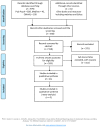An Integrative Review Exploring Psycho-Social Impacts and Therapeutic Interventions for Parent Caregivers of Young People Living with Duchenne's Muscular Dystrophy
- PMID: 33799499
- PMCID: PMC7999999
- DOI: 10.3390/children8030212
An Integrative Review Exploring Psycho-Social Impacts and Therapeutic Interventions for Parent Caregivers of Young People Living with Duchenne's Muscular Dystrophy
Abstract
The purpose of this integrative review was to explore psycho-social impacts and therapeutic interventions for parent caregivers of young people living with Duchenne's Muscular Dystrophy (DMD). Electronic databases were searched for research publications between 2010 and 2020. This included Medline, CINAHL, PsycINFO, ERIC, ERC, and AMED. Four central themes emerged: Living with DMD; Knowing and telling; Transitioning; and Building resilience. The impact on parents caring for a child with DMD affected all aspects of their lives, changed over time, and had identifiable peak stress points. Unmet parental information and support needs left parents struggling in their role. Transition required changes to parenting behaviors and required adaptation and resilience. It is proposed that future investment should focus on anticipating family need, targeting intervention cognizant of predictable stress points and building resilience through social community. Parents may then be better positioned to support their child in looking forward.
Keywords: Duchenne’s muscular dystrophy; age 13–19; family burden/care burden; muscular dystrophy; parents caregivers; psycho-social needs.
Conflict of interest statement
The authors declare no conflict of interest.
References
-
- Greener M. Making sense of antisense oligonucleotide therapy. Prescriber. 2020;31:15–18. doi: 10.1002/psb.1848. - DOI
Publication types
LinkOut - more resources
Full Text Sources
Other Literature Sources


